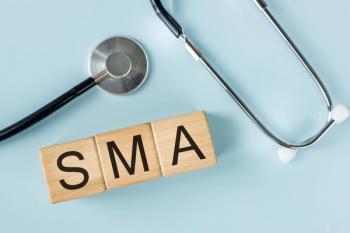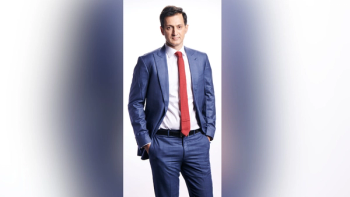
Suffer Little Children? To Medicate or Not to Medicate Toddlers
When Audre McDonald accepted her sixth Tony Award (theater’s version of the Academy Awards) this month in New York City.
When Audre McDonald accepted her sixth Tony Award (theater’s version of the Academy Awards) this month in New York City, and broadcast live on national television, she thanked her parents “for their unwillingness to put her on stimulant medication, which she believed led to her stunning success in musical theater.”
In the aftermath, her comments stirred up an already existing and heated controversy over medicating hyperactive toddlers that rages among scientists, parents, teachers and just about everyone else.
No matter what side of the issue one is on, it’s easy to balk at the idea of a three-year old being administered a Class II controlled substance of an amphetamine-based pill before school every morning. Especially, given no research exists on the impact such drugs might have on the future development of the child (emotionally and/or intellectually).
Still, when the drugs work, they work like nothing else. Paradoxically, a stimulate such a ritalin or Adderall calms down a virtually uncontrollable child, increases their focus, and allows the child to be more easily integrated into the family, classroom and further enables him or her to learn, to pay attention and to interact with his or her peers.
“I want to thank my mom and dad up in heaven,” McDonald said, “for disobeying the doctors’ orders and not medicating the hyperactive girl and finding out what she was into instead and pushing her into the theater.”
The implication, of course, is that if McDonald’s parents had medicated McDonald, her spontaneity would have been subdued and she never would have discovered her acting career.
But who is to say?
Had she been given the drugs, McDonald might well have found herself with a passion and a capacity for sustained attention when it came to reading literature or science and with the support of the medication became a doctor or a research scientist. She might even have worked on the cure for cancer.
Quick on the heels of McDonald’s comments, Time magazine’s Belinda Luscombe, reporter and parent at large, weighed in
Luscombe was concerned that people hearing McDonald’s comments might think parents who try medication don’t also try to help their kids find out what they are good at and passionate about. Of course they do, she wrote. Who said it was either/or?
Luscombe has a son with attention deficit hyperactivity disorder (ADHD) who was having a very hard time with learning. “We’ve tried the theater, sports, music, wearing him out, getting him more sleep, meditation, diet, being super-disciplinarian, being not too disciplinarian, art, bribery and shouting,” she writes. “But the thing that worked best, that enabled him to learn to read and stopped him from getting into trouble at school, was medicine.”
She added that what works for one kid doesn’t necessarily work for another, and parents of kids with ADHD deserve more support, not more anxiety.
As for the industry, the controversy has not stemmed the production of ADHD medicines for hyperactive children nor the testing of them on toddlers. Shire, a specialty biopharmaceutical company, are makers of Adderall, the most popular ADHD drug. (According to data from IMS Health, a private prescription auditing firm, the vast majority of prescriptions for amphetamine and methylphenidate are for children diagnosed with ADHD. Methylphenidate prescriptions rose dramatically in the early 1990s and have since leveled off at approximately 11 million per year. In comparison, amphetamine prescriptions, primarily Adderall, have increased dramatically recently, from 1.3 million in 1996 to nearly 6 million in 1999).
On June 12, Shire announced it will begin conducting clinical trials to assess the pharmacokinetics, safety and efficacy of its amphetamine-based and relatively new ADHA drug Vyvanse in preschool children with attention deficit hyperactivity disorder.
The Dublin-based drug maker agreed to the FDA request to teston children between the ages of four and five. The drug is typically prescribed to those aged six years and above, but ADHD has become more prevalent in US school children over the years and many are left untreated for an extended period of time.
Vyvanse helps control one’s ADHD symptoms, and worldwide sales of the drug grew by 18% during the first quarter of this year, grossing $351 million. Shire reports that the estimated prevalence of ADHD in preschool-aged children is between three and five percent and only a small percentage of those children responded well to behavioral therapy, according to a
Vyvanse is only approved for ADHD treatment in the US, Canada, Australia, Mexico, Brazil, and several European countries, presumably because stimulants affecting central nervous system (CNS) can be addictive and easily abused.
ADHD affects 4.1% of American adults and 9% of American children aged 13 to 18 years, with the average person being diagnosed at the age of seven. Boys are four times as likely to develop the disorder than girls, and it is not known why ADHD is becoming more prevalent among children.
The Shire program for preschool children will include a pharmacokinetic study (for dosing as well as safety and tolerability); an efficacy and safety study; and an open-label study to evaluate long-term safety. Patient safety will be monitored throughout the clinical trials by a Data Monitoring Committee when the trials begin during the first half of 2015.
New data
Currently, more than 10,000 American toddlers 2 or 3 years old are being medicated outside established pediatric guidelines, according to data presented on June 13 in Atlanta by an official at the Centers for Disease Control and Prevention, according to
Adding a new dimension to the issue was data presented concerning Medicaid. The report found that toddlers covered by Medicaid are particularly prone to be put on medication such as Ritalin and Adderall, and is among the first efforts to gauge the diagnosis of ADHD in children below age four.
Susanna N. Visser, who oversees the CDC’s research on the disorder, compiled the data in the report through two sources: Medicaid claims in Georgia and claims by privately insured families nationwide kept by MarketScan, a research firm. Her report did not directly present a total number of toddlers 2 and 3 years old nationwide being medicated for the disorder, however, her data suggested a number of at least 10,000 and perhaps many more.
Dr. Visser said she could offer no firm explanation for why she found toddlers covered by Medicaid to be medicated for the disorder far more often than those covered by private insurance. Medicaid data were not yet available, but Georgia’s rates of the disorder are very typical of the United States as a whole.
A prevalent view held by those against medicating young children and one that is found to be particularly irksome to those who are pro medication is that the child’s hyperactivity may well be the fault of the parents and/or a disruptive home environment. Parents are perhaps too busy to take the time to provide a supportive culture to produce calm kids and find it easier to quiet their child with a pill.
This could be exacerbated if you are poor according to Dr. Nancy Rappaport, a child psychiatrist and director of school-based programs at Cambridge Health Alliance outside Boston who specializes in underprivileged youth. At the conference, she said that some home environments can lead to behavior often mistaken for ADHD, particularly in the youngest children, according to The New York Times. “In acting out and being hard to control, they’re signaling the chaos in their environment,” Dr. Rappaport said. “Of course only some homes are like this - but if you have a family with domestic violence, drug or alcohol abuse, or a parent neglecting a two-year-old, the kid might look impulsive or aggressive. And the parent might just want a quick fix, and the easiest thing to do is medicate. It’s a travesty.”
June 13th’s report was the latest to raise concerns about AHDD. diagnoses and medications for American children beyond what many experts consider medically justified. A nationwide CDC survey last year found that 11 percent of children ages four to 17 have received a diagnosis of the disorder, and that about one in five boys will get one during childhood, according to The New York Times.
A vast majority are put on medications such as methylphenidate (commonly known as Ritalin) or amphetamines like Adderall, which often calm a child’s hyperactivity and impulsivity but also carry risks for growth suppression, insomnia and hallucinations, says the Times.
Only Adderall is currently approved by the FDA for children below age six. However, because off-label use of methylphenidate in preschool children had produced some encouraging results, the most recent American Academy of Pediatrics guidelines authorized it in four- and five-year-olds - but only after formal training for parents and teachers to improve the child’s environment was unsuccessful.
Children below age four are not covered in those guidelines because hyperactivity and impulsivity are developmentally appropriate for toddlers, several experts said, and more time is needed to see if a disorder is truly present.
The American Academy of Pediatrics standard practice guidelines for ADHD do not address the diagnosis in children three and younger - let alone the use of such stimulant medications, because their safety and effectiveness have barely been explored in that age group.
“It’s absolutely shocking, and it shouldn’t be happening,” said Anita Zervigon-Hakes, a children’s mental health consultant to the Carter Center. “People are just feeling around in the dark. We obviously don’t have our act together for little children.”
Newsletter
Lead with insight with the Pharmaceutical Executive newsletter, featuring strategic analysis, leadership trends, and market intelligence for biopharma decision-makers.





